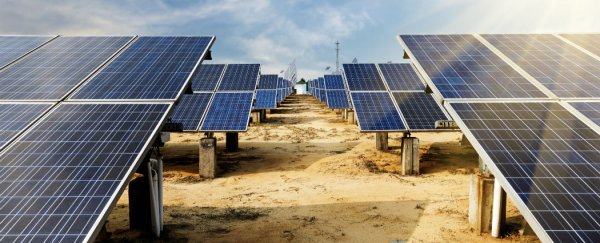Queensland's newly elected Labor government plans to generate 50 percent of the state's electricity from renewable energy by 2030, and wants one million homes to have rooftop solar systems within five years.
The 50 percent renewable energy target was outlined in the party's pre-election policy, and the new energy minister recently confirmed that the government is determined to make it happen, and will establish a productivity commission to come up with the right policy pathway to get them there. The government also has a plan to see the number of households with rooftop solar more than double by 2020, growing from 400,000 to one million.
"Renewable energy has long since stopped being a fringe issue, now is the time for Queensland to make this happen," said energy minister Mark Bailey, before a speech at the Australian Solar Conference in Melbourne. As Giles Parkinson points out for RenewEconomy, there was some speculation that the ambitious target represented "the aspirations of a party that expected to remain in Opposition."
After all, Labor had just come off on an embarrassing defeat. In 2012, the right-wing-leaning Liberal National Party (LNP) of Queensland won a record-setting majority, securing 78 of 89 seats in the state parliament. Shortly afterwards, party delegates voted to "remove environmental propaganda" about climate change from the state's school curriculum.
But the political tide has turned in Queensland, and with this commitment, all three Labor states - including Victoria and South Australia - are planning ambitious renewable energy targets. South Australia, which is already at 40 percent renewables, wants to make the jump to 50 percent by 2025. And Victoria is looking to sidestep recent legislation, which prevents it from having a state-based scheme, to try and install a similar target.
The federal government, by comparison, seems to be going in the wrong direction. It's looking to cut the national target for large-scale renewables from a planned 41,000 GWh by 2020, to 33,000GWh. This has already caused the renewable energy industry a lot of grief, as investment in large-scale projects has virtually stalled over the uncertainty.
Bailey told Parkinson at RenewEconomy that the government has already committed to an auction of 40MW of solar capacity. It's an important first step, as the state has very little large-scale renewable energy at present, save for a series of biomass plants.
Still, several large-scale solar plants have been proposed in the state, along with a large wind farm in the north near Mount Emerald, Parkinson reports.
It's great to see states and local governments in Australia setting ambitious targets, particularly given the lacklustre performance of the current federal government. Hopefully they can overcome the policy challenges and not only meet, but exceed, their goals.
